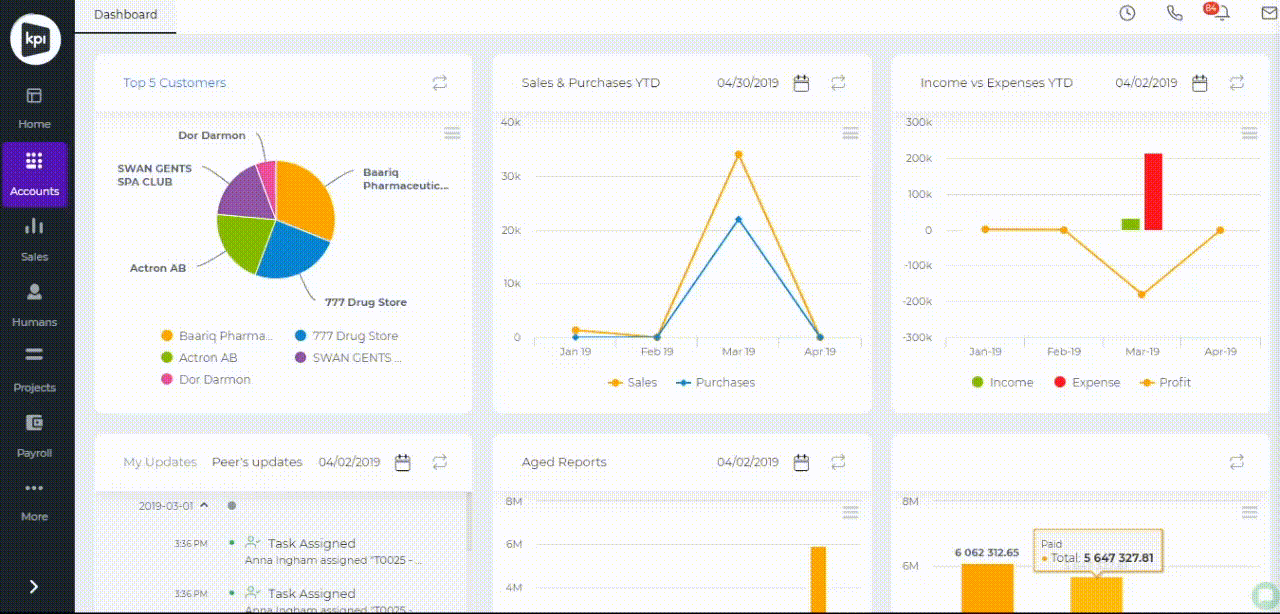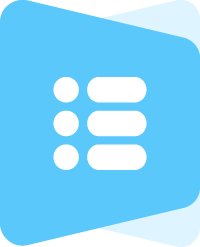Wiki
Fixed Assets
At kpi.com, you have the ability to keep track of your company’s long-term assets, like buildings or machinery, and the system will automatically figure out how much they decrease in value over time using a simple and standard method. Plus, if you sell any of these assets, you can record that in the system, whether you sold them on credit or for immediate cash, and it will be accurately reflected in your financial reports.
What are Fixed Assets?
Fixed assets are items that a company acquires with the intention of using them for a sustained period in its operations, rather than reselling them in the short term. These assets are essential for the company to carry out its business activities efficiently. As they are used over time, fixed assets generally lose value, a process known as depreciation. Examples of fixed assets include real estate properties like office buildings, manufacturing equipment, delivery vehicles, and computer hardware. These assets form the backbone of a company’s operations, enabling it to produce goods or provide services.
How to add Fixed Assets in the Accounting software by KPI?
To add a fixed asset, go to Accounts>>Fixed Assets and click the “plus” button. From Category select the Fixed Asset Category, such as Furniture & Fixtures, Equipment, etc. If you cannot locate the right fixed asset category, then go to the Chart of Accounts, and add the right category Fixed Asset account.

- Fixed Asset Code is automatically generated and comprises of suffix + four digit number. You can input any combination of suffix and digits in the pattern provided.
- Fixed Asset Cost is a historical price of a fixed asset in company’s base currency. Thus, if you set up your company with kpi.com, and your company base currency is USD, any number in Fixed Asset Cost is also denominated in USD.
- Fixed Asset Purchase Date is the date when a Fixed Asset is purchased. If a purchase date of a fixed asset is after your company conversion period, and if Calculate Depreciation is enabled, the system calculates depreciation expense and accumulated depreciation expenses.
- Useful life – is entered in years, which is the depreciation calculation used as the denominator. Useful life usually refers to the duration for which the item will be useful (to the business), and not how long the property will actually last. Many factors affect a property’s useful life, including the frequency of use, the age when acquired and the repair policy and environmental conditions of the business. The useful life for identical types of property will differ from user to user depending on the above factors, as well as additional factors such as foreseeable technological improvements, economic changes and changes in laws.
Residual Value – is subtracted from the cost of the fixed asset in calculating depreciation expense throughout the useful life of the asset. - How much a fixed asset is worth at the end of its useful life.
If you are a business owner, let’s say your desk has a useful life of ten years. How much the desk is worth at the end of ten years (its fair market value as determined by agreement or appraisal) is its residual value (also known as salvage value).
Purchase Invoice – through this link you can add this fixed asset to purchase invoice form. - Purchase Order – through this link you can add this fixed asset to purchase order form.
- Account – field completes the required input fields and it is related to an account from the chart of accounts. This field is the account that the fixed asset financed by. You need to select one account if you do not link this fixed asset to Purchase Order or Purchase Invoice.
After entering all fields and clicking save, the fixed asset is created and it is saved in the system.
Edit Fixed Asset
The edit option for Fixed Assets is available in the actions dropdown from the list.
If the fixed asset has transactions related or depreciation is enabled to the fixed asset, some of the fields become disabled to edit since the modification affects the reports and transactions.
Example for Purchase Date After Conversion Date
For instance: a company purchases machinery for $130,000 in February 2024, intending to use it for 10 years, and expects it to have a residual value of $10,000 at the end of its usage. If the company’s financial records begin in January 2024, then the following entries would be made in the accounting books:
| Date | Account | Debit ($) | Credit ($) |
|---|---|---|---|
| February 2024 | Fixed Asset | 130,000 | |
| GL Account (or Accounts Payable) | 130,000 | ||
| Monthly | Depreciation Expense | 2,000 | |
| Accumulated Depreciation | 2,000 |
In a case where the purchase date was before the conversion date (for example, December 2023), the entries would look like this:
| Date | Account | Debit ($) | Credit ($) |
|---|---|---|---|
| December 2023 | Fixed Asset | 130,000 | |
| GL Account (or Accounts Payable) | 129,000 | ||
| Accumulated Depreciation | 1,000 |
Glossary of Terms:
| Term | Definition |
|---|---|
| Fixed Asset | A long-term tangible piece of property or equipment that a firm owns and uses in its operations to generate income. |
| Depreciation | The accounting method of allocating the cost of a tangible asset over its useful life. |
| Accumulated Depreciation | The total depreciation of an asset that has been charged to expense since the asset was acquired. |
| GL Account | General Ledger Account, used to record all transactions of a certain type. |
| Accounts Payable (AP) | Money owed by a business to its suppliers shown as a liability on a company’s balance sheet. |
| Debit | An accounting entry that results in either an increase in assets or a decrease in liabilities on a company’s balance sheet. |
| Credit | An accounting entry that results in either a decrease in assets or an increase in liabilities on a company’s balance sheet. |
| Residual Value | The estimated value of an asset at the end of its useful life. |
| Useful Life | The estimated period over which an asset is expected to be usable by a business. |
Have You Experienced the Full Potential of kpi.com?
Stay on top of your finances with real-time access to your general ledger, balance sheet, profit and loss, and cash flow statements. kpi.com offers monthly, quarterly, or annual management financial reports produced to local and international financial reporting standards.
Start at just $42/month (billed yearly).
Frequently Asked Questions
What is a Fixed Asset?
A Fixed Asset is something that a business owns and uses for a long time, like buildings, machines, or computers. It is not meant to be sold quickly.
Why are Fixed Assets Important?
Fixed Assets are important because they are needed for a business to operate and make products or offer services. They are like the tools and space a business needs to work.
What is Depreciation?
Depreciation is when the value of a Fixed Asset goes down over time. For example, a new car loses value as it gets older and is used more. In business, this loss in value is tracked for accounting purposes.
How is Depreciation Calculated?
There are different ways to calculate depreciation, but a common way is the Straight-Line Method. This divides the cost of the asset by the number of years it is expected to be used.
What is Residual Value?
Residual Value is how much a Fixed Asset is worth at the end of its useful life. For example, after using a machine for 10 years, it might be able to be sold for a certain amount. That amount is the Residual Value.
How Do I Record Fixed Assets in Accounting?
To record a Fixed Asset in accounting, you need to make entries for the cost of the asset, its depreciation, and any money received if it is sold. This keeps the financial records accurate.
See also
- Purchase Order for Fixed Assets
- Goods Delivered Notes
- Sales Quote
- Sales Order
- Sales Invoice
- Recurring Invoice
- Request for quote
- Request for purchase
- Purchase Order
- Purchase Invoice
- Recurring Bills
- Company Expense Claims
- Employee Expense Claims
- Customer Center
- Supplier Center
- Products & Services Overview
- Bank Accounts
- Supplier Access
- VAT Reverse Charge Mechanism
- Setting Barcode for a Product
- Items Table
- Run Time Calculation of Exchange gain/loss
- Exporting to Excel and PDF
- Timesheet Invoice
- Budget per Department
- VAT Return
- Bank reconcilation
- Dividends Payable
- Assembly Products
- Add New Assembly Item
- What is Non-Inventory Item?
- Add New Non-Inventory Item
- FIFO method of inventory valuation
- What is Inventory Item?
- Add New Inventory Item
- Products/Services Import
- Add New Product/Service
- Intercompany Purchases
- Creating Intercompany Sales Invoice
- Intercompany Sales
- Workflow of Expense Claims
- Purchases / Bills Overview
- Timesheet based Invoice
- Progress Invoicing
- How to convert Sales Quote to Order, Invoice & Project
- Sales Overview
- Serial Numbers
- Accounting Overview
- Landing Cost
- Mark PO as Open
- Purchase Order Actions
- Receive Purchase Order
- Send Purchase Order
- Importing Customer Accounts






